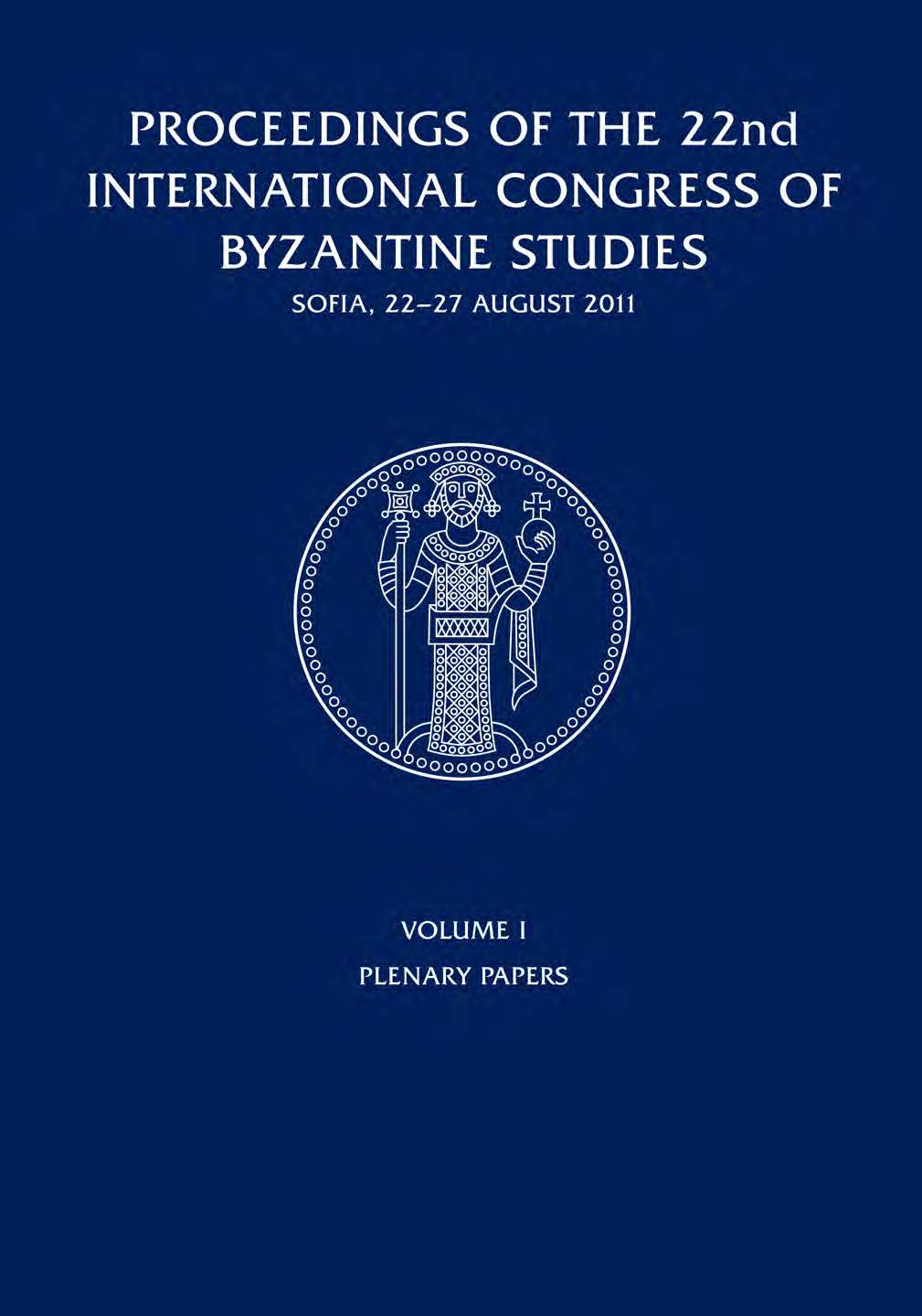
We kindly inform you that, as long as the subject affiliation of our 300.000+ articles is in progress, you might get unsufficient or no results on your third level or second level search. In this case, please broaden your search criteria.


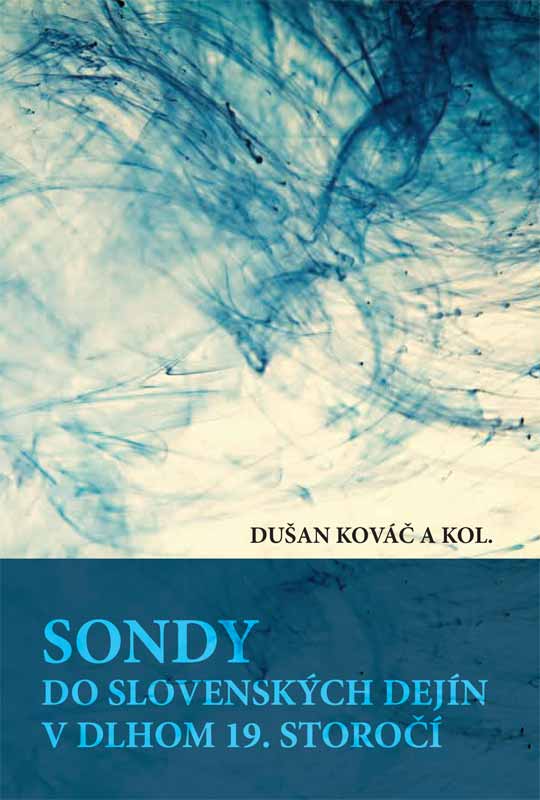
The book presents the results of new research in Slovak history in the field or period called “the long 19th century”, i.e. dating from the rule of Joseph II. in the late 18th century until the First World War. The focus of research was on the themes and domains which were either neglected in the past or needed reconsidering. The book centres on five fields and is composed of five chapters. The first chapter is called “The Nation and the national issue”. It presents new aspects by exploring one of the most principal themes of 19th century. In his study, László Vörös reflects about the modern concept of the nation, which won recognition by the most contemporary historians, ethnologists and sociologists: the nation as an imagined community and an imagined tradition which is connected with the modernisation epoch. Nationalism is specifically an urban phenomenon. In the Slovak historiography, the national movement had been explored mostly in the rural area, in the peasant milieu, because the majority of the Slovak ethnic population was composed of peasants. Eva Kowalská aimed to change this perspective and concentrated on explaining urban aspects of Slovak nationalism. In case of Slovakia, these aspects are more interesting since the Slovaks in the 19th century had no important central city, and only small towns in the countryside (like Turčiansky Sv. Martin), had tried to compensate this lack. In his contribution, Peter Macho summarises how the symbol of the Tatra mountains as well as other Slovak geographic-territorial symbols were present in the Slovak nationalist discourse. Peter Šoltés elaborates on the theme and the activities of the Slovak Evangelical intelligentsia in the first half of the 19th century. The second chapter “The National movement in foreign and domestic politics” deals with the important connection of nationalism and politics. Slovak foreign political thought was traditionally orientated toward the Russian Empire. In his contribution, Dušan Kováč shows the other side of the Slovak foreign orientation: their attitude to the Western powers England and France. Dušan Škvarna attempts at a reconsideration of the role and inspiring function of the Slovak National Council, established during the 1848 revolution. The Swiss political scientist Josette Baer, a specialist in the field of Slavonic and lately mainly of Slovak political thought, presents her analysis of the early political activities of Vavro Šrobár (an important personality of Slovak politics in the 20th century), especially his leading role in the so-called “Hlasist movement”. The third chapter is dedicated to the juridical system and economic issues. Tomáš Gábriš presents a very useful survey of the juridical system in Hungary and its changes in the era of modernization during the 19th century. His paper shows that in Hungary the tendency to modernize was clashing with very difficult obstacles, mainly ideological and political ones. The attempt to create the centralised “nation state” in Hungary restrained the most important liberal-democratic reforms of the juridical system. In her contribution, Eva Ondrušová deals with the traditional studies of economic cameralism and its influence on the economic theory and practise in the 19th century. Ľudovít Hallon and Miroslav Sabol follow the history of the Pittel and Brausewetter architectural company, which was much closely connected with and active in the very broad Pressburg (Bratislava) area. Very new themes are presented in the forth chapter named “Society, social life and environment”. Gabriela Dudeková outlines the system of poor relief in the Habsburg monarchy; her focus is on the mechanisms how the authorities denied social care to specific groups in Hungary. Slovak emigration to America is a very traditional issue in Slovak historiography. Igor Harušťák tries to consider this problem in the broader Central- and East-European context. Prior to 1989, research about the nobility as a social strata was neglected in Slovak historiography. Even after 1989, this theme was intensively researched mainly in the period of middle ages and the early modern times. However, from the social point of view, important and interesting issues are e. g. the nobility’s life style as well as the attempts of these “high society” members to preserve their status in the modern 19th century. Daniel Hupko deals with these issues focussing on the example of Lucia Wilczek. Roman Holec presents a completely new approach in his contribution about the changes in the relationship ‘man – animal’ as manifestation of a new attitude to nature during the 19th century. The last chapter of this volume is dedicated to “The Churches in the social – modernizing processes “.Ingrid Kušniráková analyses the controversial interferences of Joseph II. into the life of the Roman Catholic Church, especially the closing-down of some cloisters. Tomáš Králik focuses on the relations of the Vienna court to the St. Elisabeth convent in Pressburg (Bratislava). The chapters of this collective monograph will serve as a basis for the draft of a new synthetis on Slovak history in the “long 19th century”.
More...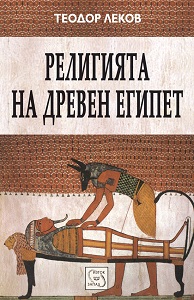
The book studies the Ancient Egyptian religion. The author describes the creation and its driving forces through the view of Egyptian concepts. The idea of God and the divine manifestations, the place of man in the world and the ways to achieve immortality are explored. The exposition is based on the study of ancient hieroglyphic texts and is illustrated with numerous examples. The book is intended for a wide range of readers who are interested in the religion and culture of Ancient Egypt. It contains three chapters: the world of gods, the creation of the world and the world of men. Special attention is paid on the concept of the kingship in Ancient Egypt. The Egyptian terminology and the names of gods and goddesses are formed as a dictionary at the еnd of the book.
More...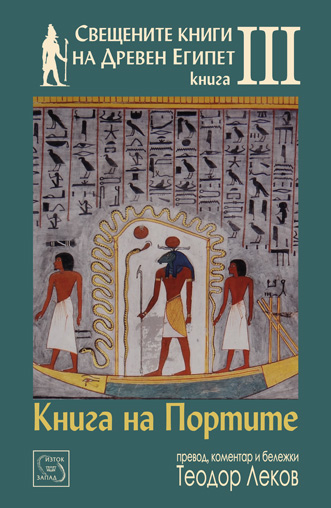
The "Book of the Gates" is the third book of Ancient Egyptian Religious Texts series, which includes the main works of the Egyptian sacred tradition. "The Book of the Gates" is an ancient Egyptian magical book devoted to journey of the god of sun to the afterlife. Its name has been given because of the gates that close the spaces between the various parts of the underground kingdom. The book is intended for the Egyptian ruler; it was unavailable to the uninitiated. It first appeared in the middle of the New Kingdom (XIV BCE) and was recorded on the walls of the royal tombs.This edition contains an introduction, an ancient Egyptian translation (accompanied by translation), images of the scenes and commentary. It is published for the first time in Bulgarian.
More...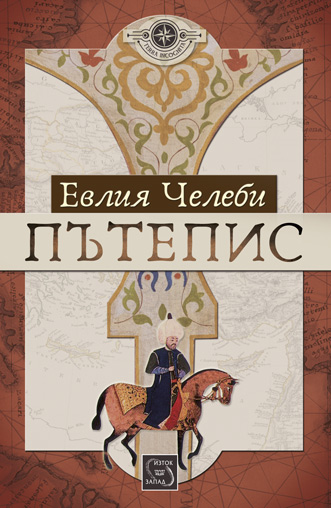
Evliya Celebi was an enlightened man in a variety of ways who believed in equality, freedom of thought and intellectual debate, and found all of these things present in Islamic societies. Over the course of his travels, he wrote ten volumes detailing his adventures. ‘Seyahatname’ – Book of Travels – is a unique and important text, representing one of the few accounts of the 17th century and the Ottoman world from the perspective of a Muslim. These are not just factual accounts, Evliya had a great imagination and just as important as his journal entries were the imaginative storytelling that ran alongside, elaborating, exaggerating, and fantasizing. Through his stories, we are prompted to think more imaginatively about our own travels and journeys to other cities. This 17th-century Muslim traveler can sometimes seem narrow-minded and yet this same man can stand in St Stephens Cathedral in Vienna and be moved by the music he hears. Sometimes these encounters lead to nothing but sometimes they lead to stories which are so deeply felt, and so universally melodic that they leave echoes which can still be heard and felt today. In 2011, the year which would have been his 400th birthday, Evliya is being paid homage as UNESCO’s Man of the Year.
More...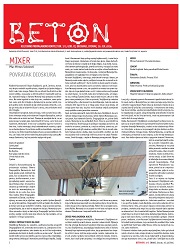
MIXER, Mirnes Sokolović: Povratak dioskura; CEMENT, Đorđe Krajišnik: Kako parodirati Mirka Kovača; ŠTRAFTA, Aleksandra Sekulić: Proleća 2016; ARMATURA, Robert Kozma: Protiv privatizacije grada; VREME SMRTI I RAZONODE, Shpetim Selmani: O drevnoj gluposti. Zašto pišem?
More...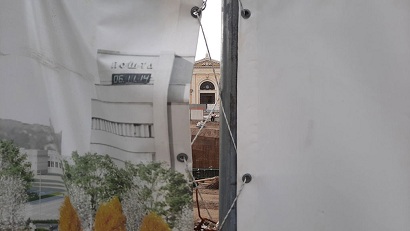
Iako je postavljanje spomenika uveliko u toku i iako brojni stručnjaci, pojedinci i organizacije (Evropa Nostra – Srbija, Akademija arhitekture, Društvo konzervatora Srbije) već više od dve godine govore u vetar, iznoseći brojne validne argumente zbog čega je planirani i izvedeni spomenik Stefanu Nemanji neprihvatljiv, kao što je neprihvatljivo i rešenje Savskog trga u celini – koliko god da se o ovome govori i piše, još uvek je moguće dodati neki argument pride. Što je i motiv za nastanak ovog napisa. Okosnicu Savskog trga čini zgrada Glavne železničke stanice, podignuta od 1882. do 1885. godine prema projektu austrijskog arhitekte Vilhelma fon Flatiha, čiju je razradu izveo domaći arhitekta Dragutin Milutinović.
More...
Sa dobrom namerom i sa profesionalnom odgovornošću Akademija arhitekture Srbije (dalje: AAS) obraća se institucijama Republike Srbije, Grada Beograda, stručnoj i široj javnosti Beograda i Srbije u povodu istrajavanja nadležnih u nametanju projekta “Beograd na vodi”, na način kako je zamišljen i otpočeo, kako se navodno razvija, a pogotovo zbog onog što može da proizvede. Podsećamo da Srbija ima 4500 arhitekata i urbanista, od toga 2500 samo u glavnom gradu. Ponižavajuća je činjenica da je jedna maketa, kojoj se ne zna ni autor ni poreklo, postala glavna matrica dalje razrade prostornog plana, za najvredniji deo grada, umesto urbanističkog plana. Tome valja dodati da su u procesu definisanja Beograda na vodi veliku formalnu ulogu imali i dokumenta potpisivali diplomirani prostorni planeri, struka koja u ovom slučaju neuspešno pokušava da zameni urbaniste jer je to nekom potrebno.
More...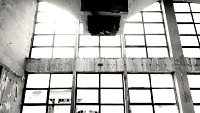
Postojeći Grad je najznačajniji mogući dokument o njegovom minulom životu. Tako bi mogla da se parafrazira jedna od osnovnih metodoloških postavki Fernana Brodela. U tom slučaju, najbolji istorijski izvor za istoriju grada je sam grad. To bi značilo da su tragovi koje je na njegovim ulicama ostavila istorija čvršći i trajniji podaci od onih koji ostaju na papiru, odnosno, da pređem na našu današnju temu, da su urbanističke odluke donete u prošlosti ostavile svoje trajne spomenike na mapi i u izgledu grada. Ako bi Beograd bio istorijski izvor, šta bismo sve mogli u njemu da pročitamo, koje bi nam to poruke o prošlosti on mogao preneti? Da li bi on mogao biti slika ne samo istorije srpskog urbanizma, već i srpske političke istorije?
More...
Hiljade primedbi građana na urbanističke planove, primedbe SANU, nekoliko povreda zakona o planiranju i izgradnji, upozorenja Akademije arhitekture Srbije i manipulacije izjavama njenih članova, raseljavanje ljudi, skandalozna reklamna emisija na Studiju B, marketinška kampanja bez neophodnih dozvola za jarbole i bilborde, izgradnja kafane kao prvog objekta najavljenog kao štand, privođenje aktivista zbog deljenja novina Ne da(vi)mo Beograd , započeti radovi i trošenje budžetskih sredstava bez ugovora o investiciji i negiranje postojećeg zakonodavstva bez presedana kroz predlaganje lex specialisa… Šta je još potrebno kako bi se ove radnje nazvale pravim imenom – prevarom.
More...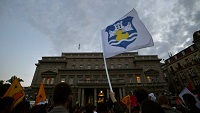
Prošlo je mesec i po dana od kada je u Savamali počinjen bestijalni čin rušenja nekoliko objekata u Hercegovačkoj ulici i ispod mosta Gazela, kao i ograničavanja slobode kretanja i narušavanja sigurnosti ljudi koji su u tom trenutku boravili u ovom delu Beograda. Sam čin je bio izraz otvorenog nasilja i protivpravnog postupanja, kako bi se nastavilo sa sprovođenjem projekta “Beograd na vodi”,odnosno sa uzurpacijom javnih resursa i gradskog i nacionalnog budžeta zarad profitiranja ekonomsko-političke elite. Ovom činu je prethodila praksa nadležnih gradskih i državnih organa da pronalaze kreativne načine zaobilaženja i kršenja postojećih zakona, pravila i procedura razvoja grada, a neretko i da ih naknadno menjaju da bi na sporan način “ozakonili” postojeću situaciju na terenu, kako bi se nastavilo sa sprovođenjem projekta koji je štetan po građane Srbije. Na takav način je rekonstruisan Geozavod, izgrađen privatni restoran Savanova na osnovu privremene dozvole za zauzeće javne površine, mimo zakona i procedura su postavljeni reklamni bilbordi i jarboli, i izgrađena je promenada, protivno Zakonu o planiranju i izgradnji. Vrhunac uzurpacije pravnog sistema je bilo donošenje tzv. Lex specialis -a kojim je po prvi put omogućena eksproprijacija javne imovine za potrebe privatnog (komercijalnog) interesa.
More...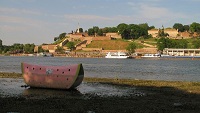
Eh, da je te pameti bilo u Džavida Nimanija, zaboravljenog tadašnjeg predsednika Predsedništva SAP Kosova i Metohije, mnogo poznatijeg kao strica najveće kosovske seks-zvezde Zane Nimani, a najpoznatijeg po kultnoj rečenici izgovorenoj kad su ono marta 1981. strane agencije javile kako je pobuna studenata prištinskog Univerziteta zbog loše prehrane u kantini prerasla u malu lokalnu kontrarevoluciju, a drug predsednik nazvao direktora Tanjuga, paničnim glasom u slušalicu zaurlao ‘Zaustavite Rojters!’ i plasirao se direktno u istoriju.
More...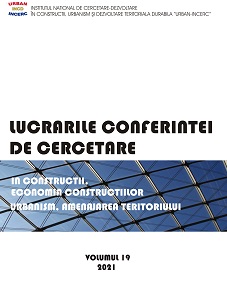
This volume represents the Paper Proceedings of theresearch conference on constructions, economy of constructions, architecture, urbanism and territorial development.
More...
Ima nečeg kod Starog tramvajskog mosta što me je oduvek podsećalo na Drugi svetski rat. Kao i mnogi Beograđani tek pre desetak godina sam čuo priču o učitelju koji u poslednji čas seče detonatorsku žicu i time spasava most. Stoga je gotovo sigurno da moja asocijacija o ratu i mostu pre ima veze sa nekadašnjim Letnjim i Zimskim bioskopom na Radio televiziji Beograd, to jest filmom „Nedostižni most“ (A Bridge Too Far, 1977) koji je bio standardan deo repertoara. Siže ovog predugačkog filma je sledeći: kako bi skratili tok rata, Saveznici su osmislili smeo prodor u srce Nemačke, ali ne kroz Francusku, već zaobilaznim putem, kroz Holandiju. Da bi takav napad bio moguć bilo je potrebno da hiljade savezničkih padobranaca zauzmu 4 velika mosta. Zatim bi ove prelaze morali da drže sve do dolaska glavnine trupa, udaljenih više od 100 km. Sve bi verovatno ispalo kako treba da u danima pred saveznički napad nekoliko nemačkih SS divizija nije prebačeno baš u ovaj deo Holandije.
More...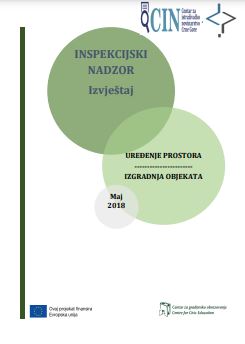
Inspekcijski nadzor u oblasti uređenja prostora i izgradnje objekata pokazao se kao nedovoljno efikasan da se izbori sa gorućim problemom nelegalne gradnje u Crnoj Gori. U proteklom periodu Inspekcija za urbanizam, Inspekcija za građevinarstvo i Inspekcija zaštite prostora definitivno nijesu uradile dovoljno da zaštite crnogorski prostor od ekstenzivnog uništavanja. Novi Zakon o planiranju prostora i izgradnji objekata, usvojen u jesen 2017, unio je velike promjene i u oblast inspekcijskog nadzora. Dok naša zemlja hronično pati od ogromnog broja nelegalno sagrađenih objekata, kojih je prema procjenama više od 100 hiljada, aktivnosti tri inspekcije koje su bile zadužene za oblast uređenja prostora i izgradnje objekata po zakonu koji je važio do pred kraj 2017. godine više su nego skromni. Od 2014. godine, kada je posljednji put izmijenjen stari zakon, pa do njegovog stavljanja van snage, tri inspekcije su ukupno izvršile više od 13 hiljada inspekcijskih pregleda, a utvrdile postojanje svega 2.800 nepravilnosti. Kroz prekršajne naloge naplaćeno je manje od 40 hiljada eura kazni, dok je kroz vođenje postupaka pred sudom za prekršaje naplaćeno dodatnih oko 100 hiljada eura. Samo je jedna od tri inspekcije tokom cijelog četvorogodišnjeg perioda imala zaposlene sve inspektore koji su predviđeni aktima o sistematizaciji, a podaci iz izvještaja pokazuju da što je neka inspekcija imala manje ljudi, manji je imala i prosjek inspekcijskih pregleda po jednom inspektoru. Za sve ovo vrijeme, sve tri inspekcije zajedno podnijele su oko 450 krivičnih prijava, ali one nemaju javno dostupne podatke o ishodima krivičnih postupaka. Liste investitora i izvođača radova za koje je utvrđeno da su kršili propise iz oblasti uređenja prostora, koje je objavljivala Uprava za inspekcijske poslove, broje znatno manje subjekata od broja nepravilnosti koje su inspekcije utvrdile. Ipak, i u takvim, više nego skromnim listama, prisutna su veoma sporna pravna ili fizička lica, uključujući preduzeća u vlasništvu države i neke kontroverzne biznismene koje su mediji dovodili u vezu sa raznim nezakonitostima.
More...
𝑆𝑜𝑐𝑖𝑒𝑡𝑎𝑠 𝐶𝑙𝑎𝑠𝑠𝑖𝑐𝑎 is a multilingual collection of papers presented at the international scientific conference that has been organized by the Department of Classical and Eastern Languages and Cultures of St. Cyril and St. Methodius University of Veliko Tarnovo (Bulgaria) since 2002. Until 2015, the conference was held annually. Since 2018, it is held once every two years. St Cyril and St Methodius University Press issues the collection within the Dr. Nicola Piccolo series. The wide range of topics and the opportunity for authors to submit their academic publications in the original language attracts researchers from all over the world.
More...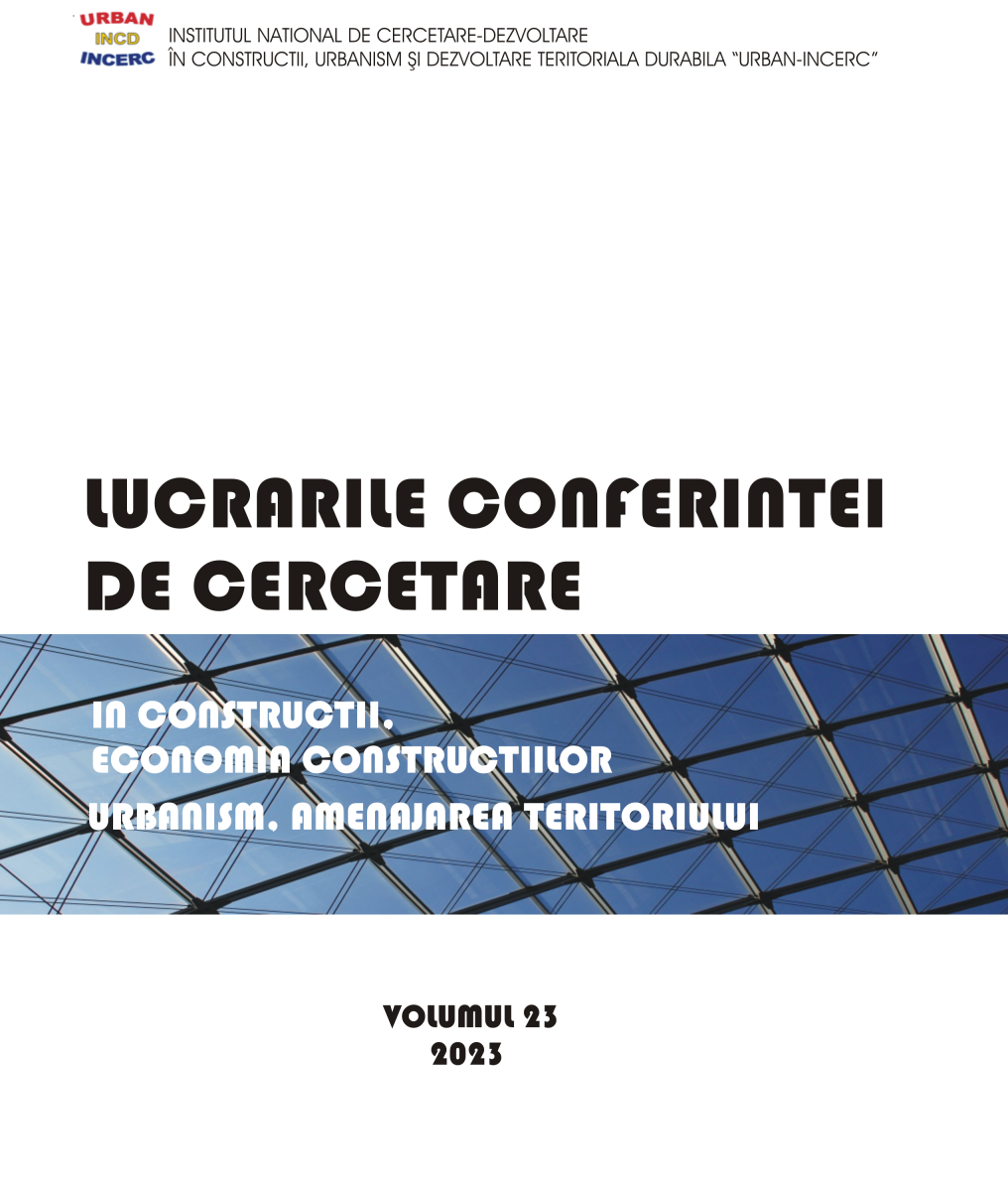
The paper explores the link between the architecture and the natural landscape of thermal baths, which were built in Hungary (Budapest) and Romania (Băile Herculane) during the early 20th century. Through a combination of various methods of inquiry, such as field trips and literature documentation, this research was able to develop a deeper understanding of the subject. The actual conditions of built heritage differs in the two countries, but are quite similar in the hazards it is prone to. With the aim of raising the public awareness of the problems facing the natural and urban landscape, this paper presents a brief description of the investigation of the thermal baths changes over time.
More...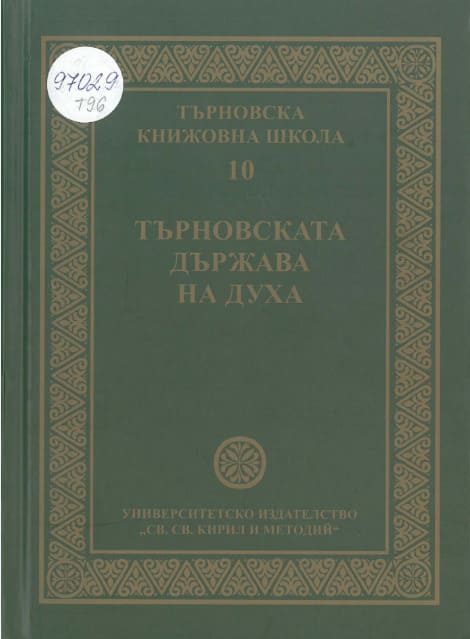
A photograph and a color copy of the fresco, made before the earthquake in 1913 have survived as evidence of the ktitor’s portrait. The ktitor is young and has a black beard, he is clad in a splendid bishop’s vestment with Latin crosses and a black monastic koukoulion. In the image, dedicated to the apostles of the Church of Rome Peter and Paul, he is positioned next to the Virgin Mary with Child on throne, above the western entrance of the church, where there had never been other ktitor’s portrait and inscription and, in fact, that gives grounds for the monumental composition to be dated in the same way as the main painting at the time of bishop Ignatius in 1442. The ktitor is depicted to give the model of the church with both of his hands to the apostles of the Church of Rome St. Peter, who presents him before Christ and his Mother, symbolizing the Church. He seems to be smaller than the other figures and his eyes are looking upwards to the Prince of the Apostles Peter – a vision of the Roman claim for supremacy. The ktitor’s model of the church reflects the state of the building with the external gal¬lery before painting the calendar in the sixteenth century, when the big arch-like barred windows were bricked in connection with the painting of the calendar. Most likely, that earlier reconstruction was done in the mid-fifteenth century, when the town of Turnovo was undertaking major buildings – e.g. the bridge and the mosque of Feruz Bey (1435). To identify the Turnovo metropolitan Ignatius, it is the style of the ktitor’s composition that also helps and the accompanying inscription with palaeographic characteristics that are specific for the signatures of the painter Nikolas (e.g. the anagram from 1442). It is known that Ignatius and the Ecumenical Patriarch Joseph II came from the Bulgarian tsarist family and had been in one and the same kellion of the Mount Athos monastery Alipu. That explains the exceptional presence of St. Athanasius of Mount Athos in the altar near the patron of metropolitan St. Ignatius the God-bearer in the diaconicon where the order of dressing was taking place. The Tree of Jesse is contaminated with the Genealogy of Christ and covers the whole space of the church. It unifies the conceptual program by spreading its branches around the Virgin Mary with Child in the apse, the arcade of the triumphant Heavenly Church with the parents of the Mother of God, the martyr priests and warriors, and the scenes from the life of Christ. A painting by Boris Denev painted before the earthquake in 1913 shows the lying Jesse at the southern pillar of the narthex where the stem of the genealogy tree is sprouting out. The vision is related to the genealogy in the Gospels of Matthew and Luke, and also in the Hermeneia of Dionysius of Fourna. The Genealogy of Matthew according to his father’s royal line starting from Abraham, Isaac and Jacob is associated with the one of Luke, according to his maternal line from the ancestors of the |Virgin Mary, Adam, Eve, and Abel, who never occupied the throne of the Jews and in this connection there is the unique branch with the righteous women. The origin of the two genealogies was on the western wall of the narthex facing Jesse. The direction of the visual narrative from left to right is indicated by the image of the semi full-face of Tara, the father of Patriarch Abraham, depicted on the western end of the southern wall of the narthex. The genealogy of Luke on the western wall of the narthex over the entrance had been developing north-wise in the narthex and the naos. The images of their descendants are partially preserved on the northern wall of the narthex (Noah with the Ark and his sons Sim and Japheth) and the naos (Nahor, the father of Tara). The genealogy after Mat¬thew on the western wall of the narthex, south of the entrance, spread over the apse with a unique branch, dedicated to the twelve sons of Patriarch Jacob. Further on, there are the sons of Judah, the Patriarch Kings Zar on the northern pillar in the narthex, and Phares on the southern wall of the narthex next to Tara, where it continues eastward reaching Jesse. From there on, the genealogy is continuing on the northern pillar with Patriarch Ravoam and then in the central arch next to Christ. The Tree of Jesse includes also images from the Hermeneia – e.g. the righteous women, the prophet Nathan, and King Joshua in the southern arch between the narthex and the naos, Patriarch Melchizedek at the northern pillar of the narthex and the pointed by him righteous men named Tobit and Tobias with scrolls unfolded in the northern arch between the narthex and the naos. The connection between the Old Testament and the New Testament is achieved along the west-east axis, from the narthex through the naos to the altar. Depicted in the apse is a branch with the Covenant of Patriarch Jacob as a symbol of the Old Testament unity and prefiguration of the Virgin Mary with Child – cf. the ewer with heavenly manna of Levi and Christ in the hands of Judas. Depicted in the central arch between the narthex and the naos is an allegory of the New Testament unity – the Council of Jerusalem, presented by God’s brethren Jacob and Judas, and the leaders of the apostles Peter and Paul, based of the Seven Ecumenical Synods in the narthex. The tree of Jesse is an element of imperial propaganda, as it is an evidence of the power being taken over from father to son. Most kings have their hands covered for the Holy Communion, but some point to the visual text – e.g. king Zar, the first-born son of Judas, points with his right hand the younger brother Perez from whom originates the family line of Jesse, and his great-grandson, King Aminadav, points with his left hand to his son Nahshon who is called upon to lead Judah’s family line before Moses during the escape of the Jews from Sinai. In the central arch, King Jotham points out to his father Uzziah, who during his life, made him a co-ruler, whereas the kings Sadok and his son Ahim, as well as their descendant St. Joseph, point to the Child dressed in golden vestments as in a dream of the prophet Jesse.
More...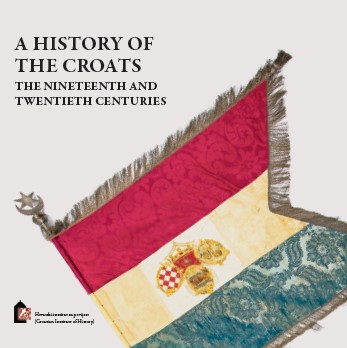
The beginning of the publication of Novine Horvatzke (January 6, 1835) and its weekly literary supplement Danicza Horvatzka, Slavonzka y Dalmatinzka (whose owner and official editor was Ljudevit Gaj) marked the entry into the most intensive phase of the Croatian national revival. It coincided with the stronger efforts of the Hungarians to limit Croatian autonomy with the imposition of the Hungarian language, and with intense competition between the Hungarian and Croatian honorati in agrarian and commercial affairs. These circumstances encouraged the involvement of Croatian noble-men and wealthier citizens in the revival movement. At the beginning of the movement, there were two social programmes. One of them was a conservative program based on Drašković’s Disertatia, which foresaw a gradual modification of the feudal system with the aim of preserving it. The second, barely known to the public at first, was a bourgeois-liberal programme to abolish the feudal system while preserving the economic strength of the nobility. At first, it was mainly advocated by the citizenry, and by 1848 it was at least partially accepted by the nobility.
More...